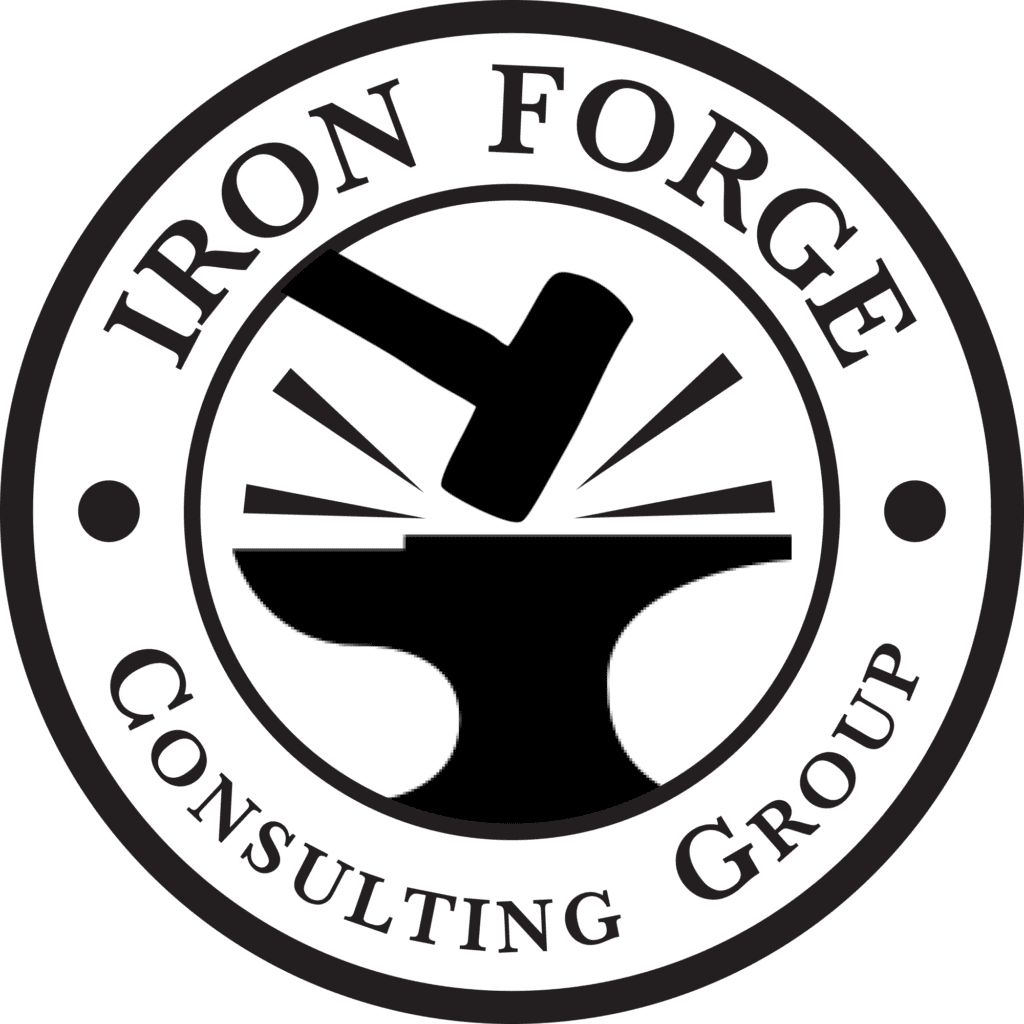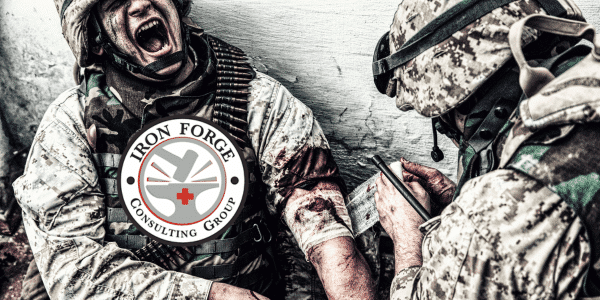SAVE A LIFE — Medical Training w/ Iron Forge Consulting Group
Do you know what to do if you roll up on a horrific car crash and multiple people are injured? Other than calling 911, do you have any medical training that would allow you to provide medical aid until paramedics arrive? Or, playing out another tragedy, what if there’s an active shooter and several people are lying in their own blood, wondering if this is the end after being shot?
Both scenarios above are not something most people would want to think about or even imagine. But both are situations you may find yourself in. Do you have the skills, medical training, and supplies to help preserve lives?
Related Article: Don’t Be the Victim of a Deadly Encounter — Prepare NOW!
Here’s an even more realistic concern if you are someone who conceals a firearm as part of their daily EDC (everyday carry). If you are prepared to stop a threat through violence (having to shoot someone or something), you’d be naïve to think there isn’t an equal threat being put on you or those around you. Therefore, medical training (also called trauma medical training, TacMed, and tactical medicine) would be invaluable in such a situation, especially when it comes to saving your life or the life of your loved ones.
In this article, I’m going to hammer home some key points on why you need to vet out proper medical training (no Ph.D. required) and why I chose to get medical training through Iron Forge Consulting Group.

Disclaimer: This article is for informational purposes only and is not meant as medical advice. Unless you have the proper credentials, we are not licensed doctors. We are prepared citizens who have the ability to take and get medical training to help save lives in a life-or-death situation.
Table of contents
Why Would You Want Medical Training?
To put it bluntly, having medical training, such as actual trauma medical training, is like having a fire extinguisher in your vehicle or kitchen. You don’t plan on needing to use the fire extinguisher, but if you need it, you have it at your disposal. The same goes for medical training. It’s better to have it and not need it than need it and not have it.
Related Article: EDC Medical Kit — More Important EDC Item Than a Firearm?
In a trauma situation, the difference between life and death can be minutes. According to TrueRescue.com, a person can bleed out from an artery in as short as two minutes. Your ability to quickly survey the situation and throw on a tourniquet (if the situation warrants one) can help preserve life and stop that person from bleeding out.
Countless lives could be saved today, but people would rather whip out their cellphones and start videoing the situation to put up on their social media channels for the views when they should be more concerned about saving the life in front of them.
Below are seven of the main reasons you should consider getting medical training (again, Iron Forge Consulting Group would be one of my top picks):
1. Immediate Response
Accidents and emergencies can happen anywhere, anytime, and having trauma medical training or any type of medical training allows you to provide immediate assistance to someone in need (or yourself). In critical situations, the actions taken in the first few minutes can significantly impact the outcome and potentially save lives.
Related Article: Situational Awareness — Defense Through Environmental Perception
One thing to remember is that the criminal determines the time and place to commit such acts, and therefore, it’s better to be prepared with some sort of medical training.
In a scenario where you are able to get to a victim and apply a tourniquet, research has shown that tourniquets save lives when used to treat trauma victims before arriving at the hospital.
2. Bridge the Gap
Emergency medical services may take some time to arrive in some situations, especially in remote areas or during natural disasters. In fact, a study by the National Institutes of Health found that the average national response time is around seven minutes, and it doubles to approximately 14 minutes in rural areas (and there are instances where response time was well over 30 minutes).
Related Article: Are Chest Seals Truly Necessary in Trauma Kits?
In case you need a refresher from earlier, you can bleed out in as little as two minutes. I’ll cut to the chase. If you don’t have medical training and the right supplies, you’re dead, or the person injured is dead.
By having trauma medical training or whatever fancy medical training terms you want to use to describe it, you can bridge the gap between the occurrence of an incident and the arrival of professional medical help, thereby increasing the chances of survival for the injured person(s).
3. Personal Safety
Point blank, you are your own first responder. It’s commonly said that “no one is coming to save you,” and if you want to survive an encounter or situation, you need the right training.
Getting some sort of medical training or trauma medical training not only equips you with the skills to help others but also provides knowledge on how to take care of yourself and stay safe in emergency situations. You’ll learn about assessing the scene, identifying potential dangers, and taking appropriate measures to ensure personal safety while taking care of yourself or assisting others.
4. Community Support
When you have medical training, you become an asset to your community. During emergencies or natural disasters, your skills can make a significant difference in providing immediate aid to multiple individuals until professional medical help becomes available.
Related Article: Live the Creed — Impressive EDC & Battle Belt Med Kits
This community support can enhance overall emergency response and resilience through your trauma medical training skills.
5. Preparedness and Empowerment
Proper medical training enhances your preparedness and empowers you to handle unexpected situations confidently and quickly (especially when seconds count).
Trauma medical training equips you with fundamental medical knowledge, basic life support skills, and the ability to control bleeding, perform CPR, or provide initial stabilization before professional medical services and personnel arrive on the scene.
6. Professional Advancement
While getting medical training through someone like Iron Forge Consulting Group or other similar businesses and organizations is not a professional certification or medical degree, it can still be a valuable addition to your skill set.
Related Article: Cutting Through Crisis — Trauma Shears in Emergency Response
Some occupations, such as security personnel, outdoor guides, teachers, and childcare providers, may require or prefer individuals with some form of medical training to ensure the safety and well-being of the people they watch, serve, and protect.
7. Personal Fulfillment
Knowing that you have the ability to make a difference in critical situations can bring a sense of personal fulfillment. Helping others in need can be incredibly rewarding and instill a sense of purpose and compassion.
My Experience Getting Medical Training with Iron Forge Consulting Group
First off, I just want to say that Jonathon Aldridge and Fish from Iron Forge Consulting Group put on one heck of a class in Bloomsburg, PA. We’re talking about over eight hours of non-stop knowledge being transferred. It’s crazy to think about how much information we covered in a single medical training class.
Related Article: Should You Carry a CAT Tourniquet as Part of Your EDC?
As I sit here writing this article, I’m reviewing the several pages of notes I wrote while trying to soak in as much knowledge and information as possible. While this wasn’t my first medical training course (I’ve completed the Mountain Man Medical Emergency Trauma Response class as well as going through the Tactical Response Immediate Action Medical course), there is nothing like putting your skills to the test while under stress and pressure.
Sure, you can buy medical training DVDs and take online medical training, but unless you have the tools needed to practice hands-on and not just sit there watching videos while messing with your tourniquet (you do have multiple tourniquets, right?), you never really get the same experience.

Jon and Fish went through a ton of information, and I left the Iron Forge Consulting Group medical training class with a ton of things to continue working on and practicing. While I already had a baseline knowledge, their first-hand experience with trauma patients provided even better tips and techniques for handling situations and fine-tuning medical training strategies.
Here’s the tough thing as I look back on the Iron Forge Consulting Group medical training — what can I share without giving everything away that was covered in the class? I honestly want you to go take the class. But I have a few key things that I want to share with you that touch on some of the topics covered and why this is an important medical training class to take (even if you don’t carry a gun daily — which you should).
The Faster You Can Implement the Medical Training Techniques, the Greater the Survivability
In the Iron Forge Consulting medical training class, you are timed to get a tourniquet onto a victim in under 15 seconds. If that doesn’t sound like a lot of time, you’re right — it’s not. But circling back to what I mentioned earlier, if you can bleed out in as quick as two minutes, you need to factor from the time the incident happened until the time you came to help someone, you may only have seconds left when actual seconds count to apply a tourniquet and pack a wound if needed to stop a bleed.
Anyone can sit there and practice putting a tourniquet on in the privacy of their own home. You don’t need a medical training class to practice these skills. And while Iron Forge Consulting Group shows you how to apply a tourniquet, the real test comes down to how quickly you can assess a patient and get that tourniquet high and tight on them or provide additional lifesaving skills like packing a wound or applying a chest seal (all things you’ll learn in the Iron Forge Consulting Group medical training class).
You Can’t Render Aid in an Active Threat Scenario
Your first piece of business when you see someone shot or injured in a violent scenario, is to stop the immediate threat. Once the threat is neutralized, you can render aid to those who need it. But being in an active scenario with bullets flying is not the time to kneel next to someone and try to render aid. Stop the threat, then provide care to the victims. If you can’t stop the threat (whether due to not carrying a firearm or other reason), your objective is to get out of there (get off the X) as quickly and as safely as you can and find cover.
With that being said, if you are able to stop the threat or someone else is able to, you will have people who will survive without injury, you’ll have people who won’t survive due to no aid or no aid would fix the problem, you’ll have people who survive due to the care you provide, and then you’ll have people who even after rendering aid won’t survive.
Related Article: Snakestaff Systems ETQ — A Tourniquet You’ll Actually Carry?
You need to understand that it’s not your duty to help someone. It’s your choice if you step in to provide aid. You have no legal responsibility to go hands-on with anyone, even if you had proper medical training through someone like Iron Forge Consulting Group or some other organization.
The MARCH Assessment is Crucial
The MARCH Assessment is essential to treating a victim (for any reason, bullet wound, car accident, seizure, etc.). I’m not going to go granular on this topic and how to go through each step, what to look for, and how to treat as you go (for that, I highly recommend you take the Iron Forge Consulting Group medical training class), but I’ll at least go through what each letter stands for.
M — Massive hemorrhage (stop major bleeding to the arms and/or legs with a tourniquet)
A — Airway (ensure they have a clear airway and can breathe)
R — Respirations (look for chest/back wounds and use chest seals)
C — Circulation (check radial and carotid pulse)
H — Hypothermia (ensure their body heat is stabilized and keep them warm)
Once you’ve gone through the entire MARCH Assessment, do it again. A few minutes later, do it again. And again, and again, until medical personnel arrive and can take over. You’re doing this to ensure you didn’t miss anything, their vitals don’t change, tourniquets don’t become loose, chest seals are doing their job and tension pneumothorax is not created, they don’t go hypothermic, etc.
Overall Thoughts on the Iron Forge Consulting Group Medical Training Class
I’m big on you don’t know what you don’t know. And if you don’t know, you should probably get some training. And when it comes to medical training, most people simply don’t know. Sure, you may watch movies and television where you see people being saved, but until you get hands-on experience, you automatically default to the “don’t know” group.
Related Article: The Halo Chest Seal — An EDC Life-Saving Tool for Chest Trauma
Also, going through medical training isn’t enough. You get rusty fast when you’re not consistently using skills. What may be second nature to you quickly becomes you moving slowly through the MARCH protocol on someone. And when you get the training, don’t think you’ll be able to jump into action immediately.
From personal experience, I’d say I was pretty darn good at going through MARCH when training on a buddy in the class. We both went through and felt really good going through the process. When they tossed me into a scenario with stress and pressure (I won’t give away the scenario in case they do it in each class, but it was intense), I froze in the middle of my assessment after finding the bullet hole, applying the tourniquet, and checking for other bullet holes — unable to remember what I needed to do next. I took a deep breath to calm myself and went back through MARCH and worked the problem until completing the full scan again and doing what I needed to in order to provide all aspects of medical aid required to treat the victim.
Does this mean I can’t help save a life? No. It just means I have things to work on to continually improve upon what Jon and Fish ran us through in the Iron Forge Consulting Group medical training class. What happened to me is what can happen to anyone when put under stress. It’s easy working on a dummy or partner in class where you’re not in a rush and can slowly move through everything.
If anything, this training is invaluable as it allowed those in the medical training class (like me) to screw up, learn from their mistakes, and keep pushing forward to improve on the skills they were taught.
Do I think you need medical training? Absolutely. And while you may be thinking that you’ll never find yourself in a war, active shooter scenario, or shooting yourself in the leg due to sheer negligence at the range, you need to think about the times you roll up on a car crash or any other accident where massive bleeding could take place like a co-worker getting cut or your neighbor doing work in their garden or home and gets a major cut to their arm or leg (or worse).
You’re far more likely to pull out your medical supplies than you are your firearm throughout your lifetime. Those lifesaving skills you learned through medical training classes could just save your life or the life of someone else.
So, whether you choose to take medical training through Iron Forge Consulting Group or someone in your area, I highly recommend you take a medical training class and learn how to implement these lifesaving skills.
If you want to take medical training with Iron Forge Consulting Group or connect with them through their various channels, I have them linked below.
Also, here’s a teaser of their Force-on-Force Medical Integration Course:
Iron Forge Consulting Group
If you want to take the Iron Forge Consulting Group medical class or any other class they offer, check out their up-to-date class roster on Bulletn. If you want to have them in your area and host a class, please complete this form.


*Disclosure: This article may contain affiliate links or ads, which means we earn a small commission at no extra cost to you if you make a purchase through these links. These commissions help support the operation and maintenance of our website, allowing us to continue producing free valuable content. Your support is genuinely appreciated, whether you choose to use our links or not. Thank you for being a part of our community and enjoying our content.
PLEASE CONSIDER SHARING THIS ON YOUR SOCIAL MEDIA TO HELP OTHERS LEARN MORE ABOUT THIS TOPIC.





